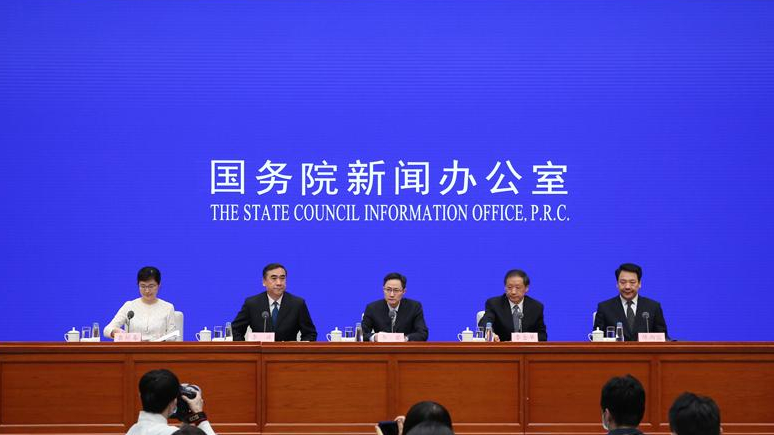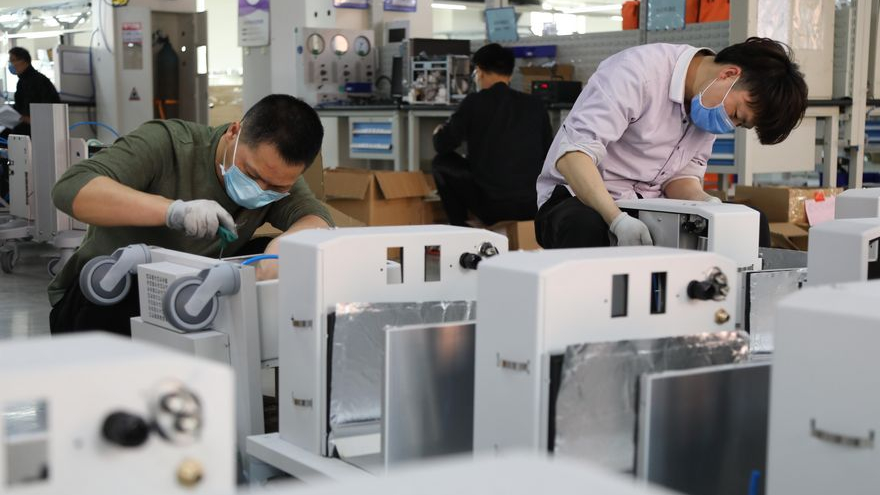
China will improve its public health response system, disease prevention and control system, as well as the medical insurance and relief system to address the weaknesses exposed during the novel coronavirus outbreak, a senior health official said on Saturday.
"This coronavirus epidemic is a big test for our country's governance and governing ability, and it exposed the weak links in how we address major epidemic and the public health system," Li Bin, vice minister of the China National Health Commission, said at a press conference on the 2019 proposals raised by members of the country's top political advisory body the Chinese People's Political Consultative Conference.
The commission intends to build an efficient chain of command to speed up responses whenever a public health emergency occurs, according to Li.
The disease prevention and control system is to be modernized to ensure direct communication between risk assessment, handling and decision-making bodies, he introduced.
In the early stage of the COVID-19 outbreak in Wuhan, due to limited hospital capacity and the shortage of medical staff, a few medical institutions failed to connect with local disease control and prevention systems in a timely manner, which resulted in delayed reporting of confirmed cases and some failures to count patients accurately.
The local epidemic prevention and control headquarters then revised the number of confirmed cases and death toll in April to ensure data accuracy and transparency after the epidemic was being contained in China.
Read more: Q&A about confirmed COVID-19 cases and fatalities in Wuhan
Besides, the commission aims to make better use of big data, artificial intelligence and cloud computing to better analyze the disease, trace the virus and distribute resources.
Supported by big data technology, contact-tracing apps used in this epidemic, to a large extent, help ease the spread of the disease. People can be notified whether they have close contact with those COVID-19 patients or suspected cases.
Read more: As confirmed cases surge in Hubei, AI may have something to offer

Employees assemble ventilators at a plant of Beijing Aeonmed Co., LTD., an anesthesia and respiratory medical equipment enterprise, in Yanjiao, a town of north China's Hebei Province, March 25, 2020. /Xinhua
Employees assemble ventilators at a plant of Beijing Aeonmed Co., LTD., an anesthesia and respiratory medical equipment enterprise, in Yanjiao, a town of north China's Hebei Province, March 25, 2020. /Xinhua
He noted the commission will improve the core research and development capability amid major public health crises, like test kits and vaccine development, and the production of such medical supplies as masks, protective suits and ventilators during the coronavirus outbreak.
According to the World Health Organization, prices of surgical masks have increased sixfold, tripled for N95 respirators and twice for protective gowns. It is estimated that healthcare workers need 89 million masks, 76 million gloves and 1.6 million pairs of goggles each month.
Li then mentioned the need to improve medical insurance and better ensure the availability of emergency materials.
A government official told at a press conference in April that China is expected to cut pension contributions and insurance fees by more than 500 billion yuan (71.27 billion U.S. dollars) this year, as it seeks to help companies weather the impact brought by the coronavirus outbreak.
Read more: How does COVID-19 affect China's public health system?
China has not seen any new deaths from coronavirus for 24 straight days.